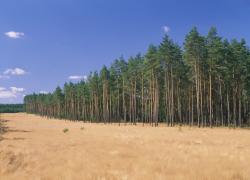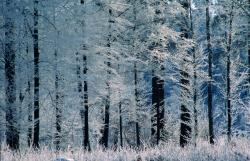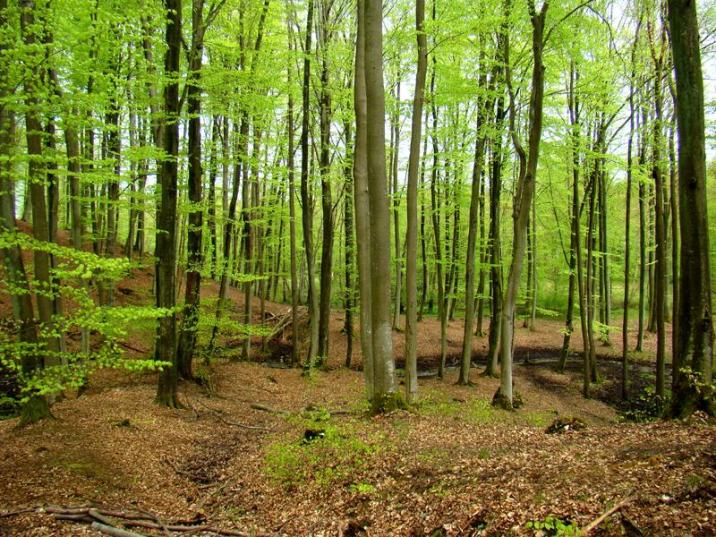 Asset Publisher
Asset Publisher
Polish forests
Poland is in the European lead, while concerning the area of all forests. They cover about 29,2 % of the country territory, and grow within the area of 9,1 million hectares. The overwhelming majority of the forests is state owned, of which almost 7,6 million hectares are managed by the State Forests National Forest Holding..
The number of Polish forest is still growing. The forestation rate of the country has increased from 21 % in 1945 to 29,2 % at the moment. Between 1995 and 2008, the forest area increased by 310 thousand ha. The basis for afforestation works is the "National Programme for Increasing the Forest Cover" (KPZL), assuming an increase of the forestation rate up to 30 % by 2020 and up to 33 % by 2050. Polish forests abound in flora, fauna and fungi. 65 % of the total number of animal species live there.
The forests grow in our country on poor soils, mainly because of the development of the agriculture in previous years. It influences the distribution of the types of the forest sites in Poland. Over 55 % of the forest areas is covered with coniferous forests. In other areas, there are forest sites, mainly the mixed ones. Their small part constitute alder and riparian forests – not more than 3 %.
In the years 1945 – 2011 the area of natural deciduous tree stands within the area of the State Forests National Forest Holding increased from 13 to 28,2 %.
Within the lowlands and uplands the most often occurring tee species is pine. It covers 64,3 % of the forest area of the State Forests National Forest Holding and 57,7 % of private and commune forests. In the mountains the predominant species is European spruce ( in the west) and European spruce with beech (in the east). Domination of pine is the result of carrying on sustainable forest management in the past. Once, the monocultures (crops or cultivations of one species) were the answer to the great demand of industry for wood. Such forests appeared to be quite fragile to climatic factors. They also were often the prey of pests' expansion.
In Polish forests, the share of other tree species, especially deciduous trees have been systematically increasing. The foresters have stepped aside from monocultures – that is why, they try to fit specific species of the forest stand to the natural stand, that would be proper for the given area. Thanks to that, in the years 1945 – 2011, the area of the deciduous tree stands within the lands of the State Forests National Forest Holding increased from 13 to 28,2 %. There occur more and more frequently the following tree species: oaks, ashes, maples, sycamore maples, elms, but also birches, beeches, alders, poplars, hornbeams, aspens, tilias and willows.
Our forests are the most often represented by the forest stands aged 40 to 80 years. The average age of the forest equals 60 years. More and more trees are of big size at the age over 80 years. Since the end of the Second World War, the forests' area has increased up to almost 1,85 million hectares.
Raport o stanie lasów w Polsce 2012
 Asset Publisher
Asset Publisher
 Asset Publisher
Asset Publisher
Międzynarodowy Dzień Lasów
Międzynarodowy Dzień Lasów
21 marca Zgromadzenie Narodowe ONZ ustanowiło Międzynarodowym Dniem Lasów. To także początek wiosny – czas przebudzenia się do życia przyrody i wielkiego symbolicznego zaproszenia społeczeństwa do polskich lasów. „Lasy Państwowe. Zapraszamy” pod takim hasłem Lasy Państwowe przypominają, że lasy w Polsce są otwarte i dostępne dla wszystkich.
Polska jest w europejskiej czołówce pod względem powierzchni lasów. Zajmują one 29,2 proc. terytorium kraju, rosną na obszarze 9,1 mln ha. Zdecydowana większość to lasy państwowe, z czego prawie 7,6 mln ha zarządzanych jest przez PGL LP. Te są dostępne dla wszystkich przez cały rok.
- Polskie lasy są zdrowe i piękne, wiele tracimy nie odwiedzając ich, a są przecież na wyciągnięcie ręki. Warto wiedzieć, że powierzchnia lasów w Polsce wciąż się zwiększa. Na przestrzeni 68 lat udało nam się zwiększyć lesistość kraju z 21 proc. w roku 1945 do 29,2 proc. obecnie. Od 1995 do 2012 roku posadzono 33 tys. ha lasów – przypomina Adam Wasiak, dyrektor generalny Lasów Państwowych.
21 marca leśnicy z całego świata będą również informować o znaczeniu lasów dla życia każdego człowieka. Jak wylicza ONZ, od lasów uzależniony jest byt 1,6 mld ludzi na świecie oraz istotna część globalnej gospodarki (wartość rynku produktów leśnych przekracza 300 mld dolarów rocznie). Są one domem dla 80 proc. gatunków roślin i zwierząt (w Polsce w środowisku leśnym występuje aż 32 tys. gatunków flory i fauny, czyli 65 proc. wszystkich u nas spotykanych). Lasy pełnią ważną funkcję „pochłaniacza" dwutlenku węgla (np. drzewa w polskich lasach mogą zmagazynować łącznie aż 900 mln ton węgla). Co roku leśnicy w Polsce sadzą 500 mln nowych drzew. Ciekawostką jest, że młode drzewa pochłaniają znacznie więcej CO2 niż stare. Najstarsze, ulegające rozpadowi, wydzielają ten gaz do atmosfery. Lasy zatrzymują też wodę, przeciwdziałając powodziom (tylko dzięki realizowanemu przez Lasy Państwowe programowi tzw. małej retencji lasy na terenach nizinnych zmagazynują ok. 120 mln m sześc. wody).
Lasy zapewniają nam też inne, bardziej namacalne korzyści niemal w każdej dziedzinie życia i w niemal każdym miejscu – od kuchni, przez aptekę, po plac budowy. Najważniejszym leśnym produktem jest drewno, surowiec trwały i elastyczny, a przy tym relatywnie tani, który wciąż znajduje 30 tys. różnych zastosowań. To jeden z niewielu materiałów ekologicznych, który powstaje w wyniku naturalnego procesu biologicznego i nie wymaga nakładów energii obciążających nasze portfele lub środowisko. Jego zasoby – pod warunkiem prowadzenia rozsądnej gospodarki – są niewyczerpane.


 fot. Paweł Fabijański
fot. Paweł Fabijański
 fot. Paweł Fabijański
fot. Paweł Fabijański
 fot. Paweł Fabijański
fot. Paweł Fabijański





